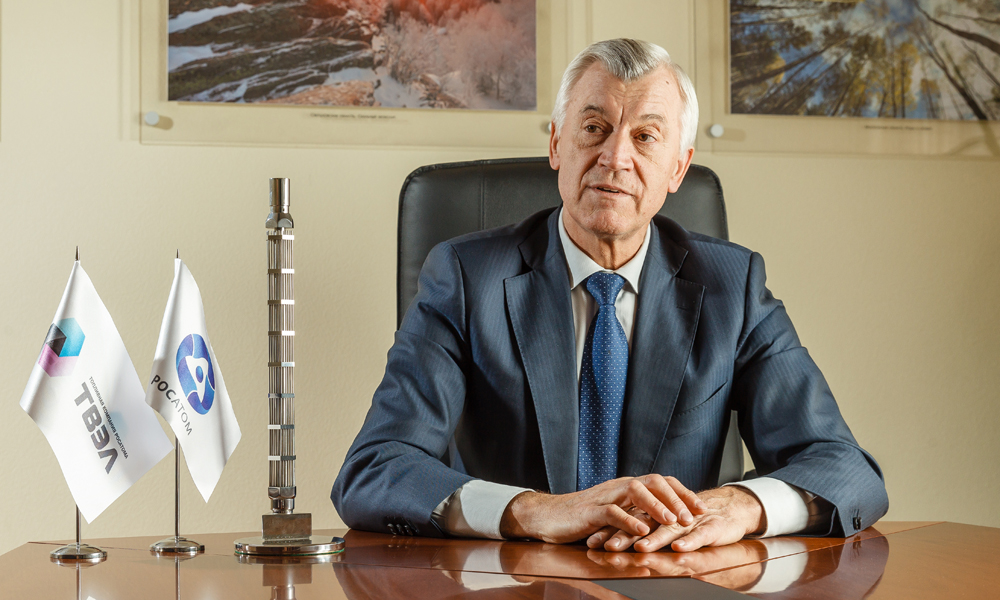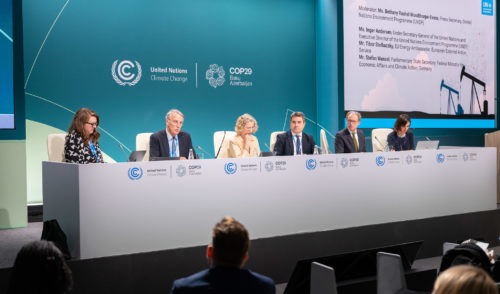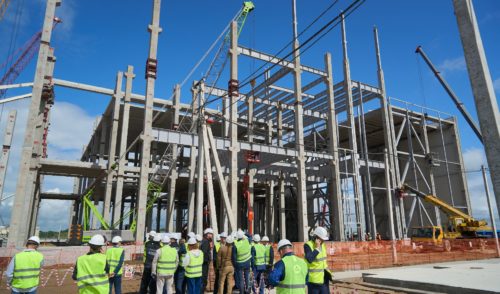
Pyotr Lavrenyuk: We Have a Difficult Exam Ahead
back to contents— When and how did the idea come up to manufacture TVS-K fuel?
— In the early 2000s, we came to an understanding that many Western nuclear operators were looking for new suppliers of nuclear fuel in addition to Westinghouse and Areva. Evgeny Adamov, the then head of the Russian nuclear industry, gave TVEL a task to consider a possibility of entering the Western fuel market. And yes, there were those who were skeptical about the feasibility and prospects of the project; there were financial difficulties, but they did not stop us.
— What companies were involved in the development of the new fuel?
— The TVS-K fuel development project was coordinated by OKBM Afrikantov. Materials and design were developed by Bochvar Russian Research Institute of Inorganic Materials. Leipunsky Institute and Kurchatov Institute were also involved in the project. An important role in testing fuel designs was played by Novosibirsk Chemical Concentrate Plant. Some ideas about the guide rod technology were proposed by Chepetsk Mechanical Plant.
— How difficult was it to develop such fuel in technical terms?
— We had all the research, design and production capacities required to start the project. But true, it was difficult because our fuel had to be compatible with that used in Western-designed reactors. We did not have enough information to quickly produce a fuel assembly like that, so it took us some time. We completed all the calculations, testbed experiments and in-pile studies of different fuel components by 2007 and came to the conclusion that we were capable of offering the market a new product. In 2008, we began working in close contact with Swedish company Vattenfall that provided us with data needed to finalize the project. It took TVEL two years to have been qualified as a fuel supplier.
In 2011, our Swedish partners made sure that our product met their requirements and decided to work with us.
— Was it difficult to reach an agreement?
— I would not say it was very much difficult. We had a clear understanding of our capabilities and the customer’s requirements, so it was not a problem to make an agreement. In 2011, we signed a contract to produce pilot fuel assemblies. From the very beginning, we set ourselves a task to make no mistake. We were told that we should make a fuel to be used at uptated power. When the talks reached a point of discussing commercial supplies, it meant that the fuel met the customer’s requirements. Our initial design underwent minor changes only.
— The contract for commercial supplies of TVS-K fuel was a 2016 milestone for Rosatom. Was it easy to sign the contract?
— It was an idea of the Swedish customer to sign this contract. It should be noted that this is a ‘deferred decision’ contract. Deliveries will begin in 2021.
— What are the advantages of TVS-K over Western fuel?
— Our fuel differs from the fuel of Westinghouse or Areva in a number of parameters, including structural materials, spacer grids and manufacturing technology. We strive to make a fuel that will be trouble-free for the operators in terms of control. We managed to design fuel elements that do not change their geometrical shape after five years in operation in very tough conditions. When designing TVS-K, we relied on our expertise in producing nuclear fuel for VVER reactors. Fuel burnup is another important parameter. We have reached a burnup of 60 MWd/kgU while maintaining safe and reliable operation of the fuel assembly.
— What is the progress in promoting TVS-K fuel on the American market?
— The process is underway without fail, but it is strictly regulated. It is not a task of TVEL as Rosatom’s fuel division alone. It is a task of Rosatom. Test operation requires delivery of four to eight fuel assemblies. If our plans are fulfilled, production of TVS-K will be organized in the USA.
— Why did you make this decision? Do Americans have capacity to fabricate this fuel?
— This decision was made for the reason of logistics. The U.S. nuclear industry is a well-oiled mechanism. No stock is kept at the plant. To supply fuel from Russia means to ship it across the ocean. This is too long. And there should be no failures. This is why we had discussed the possibility of organizing fuel production in the USA from the very beginning. More important is to decide whose uranium to use. We will insist on using our uranium.
— Have you assessed the market for TVS-K fuel?
— The market assessment has been carried out, and goals are set. The main thing is to achieve these goals. We do not want to limit fuel supplies to two or three reactors. I would like to stress it once again that we plan to supply TVS-K fuel on a commercial scale. Rosatom has set an ambitious promotion goal with regard to TVS-K fuel. Apart from business, there is politics, and our task is to convince customers that the product we offer is reliable and has excellent performance characteristics and a competitive price. The market is vast, but we understand that no one will give up its market position. Most of the target reactors are located in the USA. Entering the American nuclear fuel market is a new and difficult task. This is the reason why we have made a partnership with Global Nuclear Fuel Americas, a heavyweight player of this market. Many operators from all over the world will be more willing to work with us after we are licensed in the USA. In other words, we have a very difficult exam ahead, but I am sure we will pass it.




